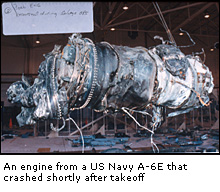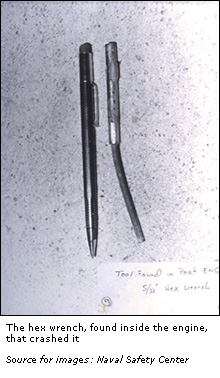 Foreign Object Debris (FOD) is a substance, debris or article alien to the vehicle or system which would potentially cause damage.
Foreign Object Debris (FOD) is a substance, debris or article alien to the vehicle or system which would potentially cause damage.
Foreign Object Damage is any damage attributed to a foreign object that can be expressed in physical or economic terms that may or may not degrade the product’s required safety and/or performance characteristics. Typically, FOD is an aviation term used to describe debris on or around an aircraft or damage done to an aircraft.
FOD has been part of accidents and unscheduled maintenance reports since the earliest days of flight. Propeller nicks, tire damage, and fabric tears go way back. But the problem of foreign objects really came into focus with the introduction of the jet engine.
FOD includes loose hardware, tools, parts, pavement fragments, catering supplies, building materials, rocks, sand, pieces of luggage, pens, coins, badges, hats, soda cans, paper clips, rags, trash, paperwork and even wildlife. Anything that can find its way into an aircraft engine or flight control mechanisms is a recipe for foreign object damage.
And, this damage can result in anything from minor repairs to catastrophic events. FOD can be found anywhere in the aviation environment–from the manufacturing plant to airport terminal gates, cargo aprons,taxiways, runways, and run-up pads.
The National Aerospace FOD Prevention, Inc. estimates the cost of FOD to the global aerospace industry at $4 billion annually. These dollars are spent largely repairing aircraft engine damage caused by the ingestion of foreign objects from runways.
Perhaps most importantly, FOD is preventable.
 For more information on FOD, check out these resources.
For more information on FOD, check out these resources.



